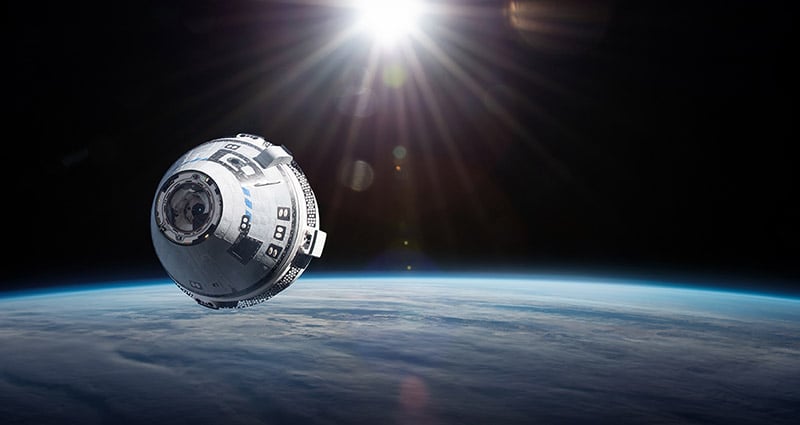Ever since the end of the Space Shuttle program in August of 2011, the United States has been relying on Russia for transport to the International Space Station. NASA has been driving towards domestic capability ever since. Fast forward to 2024, we are now at the doorstep of having two options, which will be owned and operated by commercial companies.
Transportation, infrastructure, and sustainment of Low Earth Orbit space stations are pivoting to the private sector, where governments will start to take more of a back seat approach versus owning the whole process. This is visibly on display with regard to the transportation aspect of this ecosystem. With the dawn of two US-based transport capsules to support carrying cargo and astronauts up to the International Space Station, this is a significant example of the ongoing pivot.
The successful launch and docking of the Boeing Starliner atop a United Launch Alliance Atlas V rocket are significant accomplishments for Boeing and for the space industry, as a whole. The new era of Low Earth Orbit sustained infrastructure is in full force with this accomplishment. With both commercial options transitioning into a normal flow of activity, it appears that NASA will have the ability to focus on other programs and support the handoff of the next-generation space station work to private industry. This certainly will take some time but will be exciting to watch how things unfold.

Renesas high reliability space products, formerly owned by Intersil, have been supporting the space industry for six decades. From defense to commercial and space exploration, we have been a part of and witnessed it all. As the space industry pivots to significantly more utilization of Low Earth Orbit, we are working to position ourselves with the right products for the right mission profiles. Whether it is for short flight durations and lower radiation requirements, or long flight durations and high radiation requirements, our space grade products are meeting this ever-expanding spectrum of needs.
Our multi-production flow development strategy offers products in three different flows: Radiation Tolerant Plastic, Radiation Hardened Plastic, and Radiation Hardened Hermetic, which allows system designers to easily scale their designs based on program needs and get to market faster. Our broad portfolio of power management products covers a wide expanse from integrated FET regulators, PWM controllers, FET drivers (MOSFET and GaN FETs), GaN FETs, to linear regulators and power peripherals. This allows for compact, robust, and efficient power conversion from the solar panels down to the point of loads. Power management is like the heart of electrical systems, energizing the other parts of the system to do what they were designed to do.
Another core competency for the Renesas high reliability product portfolio has been the precision analog and mixed-signal product offerings. To support the evolving space landscape, a diverse array of products support precision sensor signal processing, everything from sensors all the way to the FPGAs/MPUs/MCUs with advancements in performance. Example products in this area are cold sparable multiplexors, precision operational amplifiers (op amps), precision voltage references, and high-resolution/precision analog-to-digital converters (ADCs). This portfolio of products is particularly well suited for telemetry, tracking, and control (TT&C) applications, but finds a home in most onboard payloads. Like the five senses of the human body working with our nervous system and brain to keep us out of trouble, these systems are responsible for maintaining the health and performance of the spacecraft.
These space-grade solutions in the power management and sensor signal processing area, have considerable flight heritage and are available in both radiation hardened and radiation tolerant product flows, supporting different quality, reliability, performance, and cost points.
The Starliner is yet another great example of the paradigm shift that is ongoing in the space economy ecosystem. All facets of this ecosystem should, and are taking notice, evaluating technological advancements/needs and business models. This ultimately will enable an acceleration of maximizing space in endless dimensions.
To learn more about Renesas’ high reliability space products, visit our Space & Harsh Environment page.
